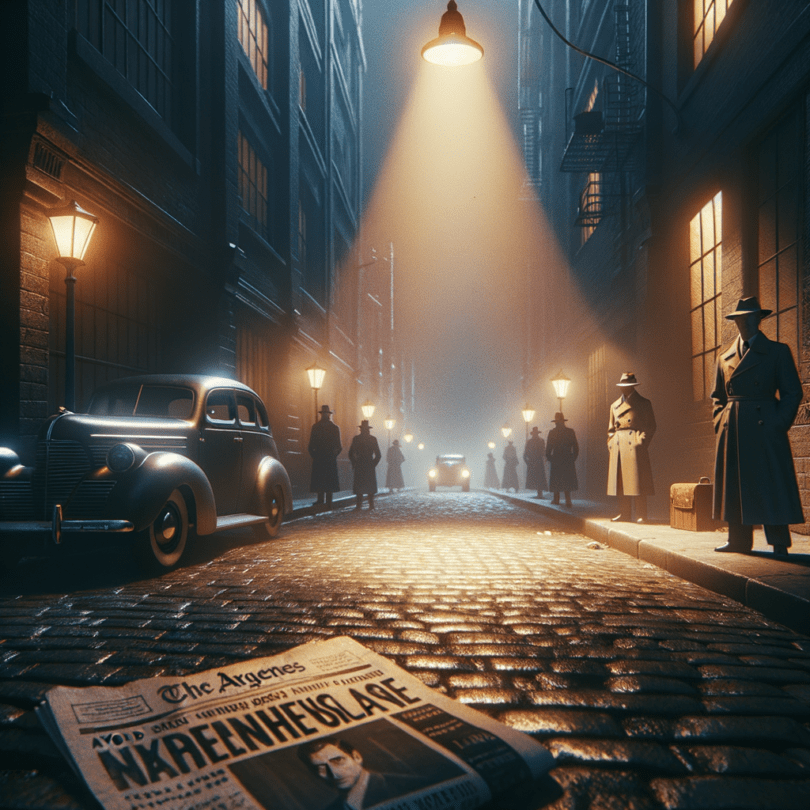You know, I still remember the day I first stumbled upon the Black Dahlia case. It was one of those lazy Sundays where I was just flipping through true crime documentaries, feeling a bit like Alice falling down a really dark rabbit hole. And then, there she was—Elizabeth Short. Her eyes seemed to peer right through time and space from my screen, etching her mystery on my soul forever.
Elizabeth Short, often called the Black Dahlia, wasn’t just another name on a long list of crime victims. Her tale is like a thread woven into the very fabric of post-war America, a time when hope clashed with lingering shadows. She was the embodiment of the countless young women who flocked to Hollywood, each one grasping for a piece of the glamorous dream. Yet, for Elizabeth, that dream remained heartbreakingly out of reach.
The Start of a Dream
Growing up in Medford, Massachusetts, Elizabeth was one in a lineup of five sisters. Her early years were tough—as tough as it gets when your dad vanishes and leaves you all to fend for yourselves. Yet, there was always this sense of hope in her. I wonder sometimes if she ever found a place that felt like home, especially with all the moving around to fix her health issues.
But Hollywood was her true love. It was practically an obsession—the allure of the shiny lights and promises of stardom. Sadly, when she reached Los Angeles, it was more of a lion’s den than the land of dreams she had imagined. A place where broken dreams floated around, mingling with the lonely souls.
The World She Walked Into
Writing about Elizabeth requires a peek into the world she stepped into. L.A. after the war was a different beast. Sure, it looked cheerful from the outside, but underneath lay chaos—a city battling crime spikes and economic roller coasters. Hollywood, shining bright, was often a tricky place, filled with broken promises.
Elizabeth fit into this world seamlessly—a cocktail waitress with hopes of becoming an actress. Folks around her said she was charming with a touch of mystery. Her black wardrobe only added to this air of enigma. It’s heartbreaking how people sometimes get swallowed up when chasing a dream that never quite lands.
Her story makes me think about the dangers that dreams can hide. Elizabeth was described as a drifter, seen here, there, and everywhere, caught in the whirlwind of Hollywood’s highs and lows.
The Haunting Discovery
I can never forget the chill that grips me every time I read about January 15, 1947. When I imagine Elizabeth’s body, mutilated and left in Leimert Park, it feels like a cold hand closing around my heart. Initially mistaken for a mannequin, her lifeless form was posed with terrifying precision, her face etched with a sinister ‘Glasgow smile’ that haunts me still.
This murder shocked L.A. to its core. The city couldn’t comprehend the brutality, and the media didn’t waste a second, transforming Elizabeth into a sensational story. The nickname “Black Dahlia” caught on—a mixture of beauty and horror, like something out of one of those dark, shadowy noir films.
Even now, when I look at how her death achieved the fame she yearned for, I can’t help but feel a pang of sadness. It’s a harsh reminder of how twisted the world’s validation can be.
The Hunt for Justice
From the very start, the hunt for Elizabeth’s murderer was like trying to unravel a never-ending puzzle. There were over fifty suspects, and eventually, more than 150 false confessions. It’s wild the lengths to which people will go, drawn to evil like moths to a flame.
Public interest practically steering the investigation… Imagine the pressure on those detectives! And as time went on, evidence faded. Those who could have shed light were either too frightened or too enticed by the infamy to come forward truthfully.
The possibility that her killer was just another face in the crowd… It’s spine-chilling. They could have watched as everything unfolded—keeping their secret while everyone else cried for justice.
The Untold Suspects
With each new suspect, the case grows more tangled. One intriguing name is Dr. George Hodel. His own son, Steve, later turned detective, seemed hell-bent on proving his father’s guilt. The evidence he uncovered was pretty compelling, yet the truth remains elusive.
Just picturing that family turmoil sends shivers down my spine. Can you imagine discovering that level of darkness in your hero, your parent?
And then there were others like Leslie Dillon, who was oddly fascinated by the case, and soldier Joseph A. Dumais with his inconsistencies. Each suspect adds a new layer to the enigma, like whispers in a gloomy, fog-lit alley.
The Legacy of the Black Dahlia
Elizabeth’s story remains unsolved, and that only feeds the chilling legend that keeps growing. Her tale is not just for true crime fans; it’s a piece of cultural memory that pulls everyone who’s curious about the darker corners of human nature.
Books, films, podcasts—you name it, her story keeps being told. Each version shines a new light on her life and brutal demise—a twisting narrative that never ceases to captivate.
Whenever I delve deeper, I feel a mix of hope and sadness in my chest. Hope that someday her murder will be solved, giving her the peace and recognition she sought. But until then, the mystery of the Black Dahlia remains a haunting echo beneath the hustle and hum of L.A., a constant reminder of dreams left unfulfilled and dangers unforeseen.

